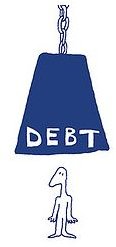Tips on How to Estimate Your Opening Balance Sheet, Determine Fixed Assets & Liabilities & Configure Equity, Net Profit, Liabilities & Capital
What is a Balance Sheet?
A balance sheet is a snap shot of your business, usually at the end of each month. A balance sheet show your assets, current and long-term liabilities, capital, and net profit for any given month. If you takeover an existing business or start a new one, how do you create an opening balance sheet?
First off, it’s always necessary to create one for several reasons. Your accountant will need one and if you plan to seek funding for your business, banks and lenders will require one. The Small Business Administration (SBA) offers a great Microsoft Excel balance sheet template which can be found in our Media Gallery. Before you read further about opening balance sheets , it’s suggested you print this template and follow along to help you understand the easiest way to make balance sheet assumptions.
Dissecting the Elements of the Balance Sheet
Life may be a balancing act, but when it comes to your balance sheet, you need to be as accurate as you can be while also making assumptions. Now that you’ve printed out the balance sheet template, here’s how to break down the elements:
Current Assets
Cash - This is the amount of cash you expect to have in your business checking, savings, money market, and payroll accounts as well as any petty cash on-hand.
Accounts Receivable - If you are a new business, this number may be zero. If you have taken over an existing business and have inherited their accounts receivable, this number goes here. For example, if the company is owed $10,000 from customers, you would put $10,000 in this field.
Bad Debts - New businesses will have no bad debts on opening day, however, an existing business may. During your due diligence period when you bought the existing business, you should have inquired about bad debts. If there are any, place that amount in this field.
Inventory - Whether you are a new business or an existing business, you will have inventory. New businesses should estimate what they intend to spend for inventory to have on hand for opening day. Existing businesses can use the inventory already in place to come up with this number.
Prepaid Expenses - Prepaid expenses almost always occur for both new or existing businesses. These are expenses you pay to utility and telephone companies to hook-up service to your business and any city water or sewer fees you have to pay prior to opening day. Check with your accountant for any other prepaid expenses you should put in this field, however, they are mostly reserved for prepaid utility fees, hook-ups, or licensing fees.
Notes Receivable - A new business may or may not have any notes receivable, but existing businesses may. An example of a note receivable from an existing business would be a short or long-term financing note the company is allowing a customer to pay over a period of time.
Current Assets - The sum of all of the above items, less bad debts, determines your Total Current Assets.
Fixed Assets
The next part of your Assets include fixed assets, depreciation, goodwill, and any other assets you plan to have on your books on opening day.
Fixed Assets
Vehicles - Are you inheriting a company vehicle? If so, the value of that vehicle goes here. If you purchase a new vehicle, the purchase price of that vehicle goes here.
Furniture and Fixtures - New businesses who buy new furniture and fixtures should place the amount they paid in this field. Existing businesses who inherit furniture and fixtures should get a value from the prior owner based on their financial records.
Equipment - Place the value of any new equipment purchased here for new businesses. Equipment estimates from existing businesses again can be obtained from the old company’s financial records.
Buildings & Land - If you are purchasing land and a building or constructing a new building or making improvements to an existing building, these amounts make up the value of your land and building. If you are taking over a land and building from a prior owner, again, get the value from their financial records. If you are only leasing a building, you need not worry about these fields.
Depreciation - Depreciation can be tricky for the non-accounting person. Depreciating fixed assets means you must know how much the item initially cost, and how long you expect the item to last as well as other calculations. As a business owner myself, I let my accountant run a depreciation schedule each year at tax time. To ensure your accountant can accurately come up with a depreciation schedule, keep good records of new purchases and existing fixed assets that came with the business and how they were valued. Most lenders will allow for these fields to be empty for an opening balance sheet.
Total Fixed Assets - This will be the sum of all of the above.
Other Assets
Goodwill - Goodwill applies to people who buy existing businesses. Goodwill are intangibles like telephone numbers, email addresses, business name (if you are keeping the name) and other intangible items. The selling business owner will usually put a value on goodwill and intangibles.
Other Assets - You can add lines to this Excel spreadsheet if you have other assets that do not fit in any other category.
Total Assets - This amount will be automatically calculated from the amounts you entered in Current Assets, Fixed Assets, and Other Assets.
Liabilities

The next element of your opening balance sheet includes liabilities, long and short-term liabilities, notes and mortgages payable to determine your net profit and owner’s equity or capital. Keep in mind, you want to have a positive capital on your opening balance sheet.
Current Liabilities
Accounts Payable - Even new businesses may have accounts payables due from inventory and advertising expenses incurred prior to opening day. Existing businesses may inherit the old owner’s accounts payable depending on how you structured the deal.
Sales Taxes Payable - If you owe sales tax on any items you purchased, the amount will go here. You should not agree to pay any upaid sales taxes from an existing business.
Payroll Taxes Payable - New business should estimate from their anticipated payroll what payroll taxes will be due. Read about 941 payroll taxes in the article, What You Need to Know About 941 Employee Taxes. Existing businesses can determine payroll taxes payable from the prior owner.
Accrued Wages Payable - New business owners who have no payroll on opening day, but will pay employees in one or two weeks can estimate this amount based on offered salaries. Existing businesses can get this amount from the prior owner’s financial records.
Unearned Revenues - If you have paid a vendor to install new vendor shelves, this is considered to be an unearned revenue. Items like this will go in this field.
Short-Term Notes Payable - If you borrowed money from an individual, your family trust or some other source other than a bank and have to pay it back, the amount goes here. Short term notes are ones you expect to pay off in less than five years.
Short-Term Bank Loan Payable - If you borrow money from a bank or anticipate borrowing money from a bank, the amount should be placed in this field. If you are applying for a loan from a specific lender, make sure to include this on your opening day balance sheet, even if you don’t have the loan on opening day. Your lender will expect to see it on your balance sheet. Keep in mind that short term loans are loans you expect to repay in less than five years. If you do anticipate borrowing any money and receive it, make sure you offset the short-term note by placing the cash you receive in your cash account on your asset side.
Total Current Liabilities - This is the sum of all of the current liabilities listed above.
Long-Term Liabilities
Long-Term Notes Payable - Bank loans or notes that you will be paying back in five years or more are considered long-term notes. Again, include long-term loans you expect to experience and don’t forget to include the cash you will get on the asset side.
Mortgages Payable - If you have a mortgage on your land or building or both, the amount of that mortgage goes here. It offsets the asset side of your balance sheet. For example if your land and building is worth $500,000 on the asset side and you owe $400,000 on the liability side, put that number in this field; so $500,000 is an asset and $400,000 is a mortgage payable.
Total Liabilities - This amount is the sum of your current and long-term liabilities.
Owner’s Equity, Net Profit, Total Liabilities and Capital
Capital consists of your equity in the business, and your expected net profit on opening day.
Owner’s Equity - Every dollar you paid for your business, new or existing, should be placed in the owner’s equity field, even the purchase price you paid to a prior owner. You should also include all cash you’ve contributed to the business prior to opening day. Loan proceeds should not go in this field, however.
Net Profit - This field is determined by all of the other fields you entered throughout your assets and liabilities. Keep in mind that most new businesses will not show a net profit and that’s is acceptable to lenders. Existing business, especially turn-key operations, will show a net profit.
Total Liabilities and Capital - Again this is a pre-programmed field that will balance your assets and your liabilities.
You do not want to have a negative owner’s equity nor a negative balance sheet. If you have trouble figuring your balance sheet, enlist the help of the SBA in your area or contact local economic development centers for assistance; both of these places offer free services to small business owners. If you can afford it, enlist the help of your accountant.
I have also included in our Media Gallery the Opening Balance Sheet I completed for the takeover of a car dealership with fields entered for your perusal. When considering how to estimate your opening balance sheet for your business, a good idea is to take some free online training from the SBA, which explains how to complete your opening day balance sheet.
The sample balance sheets included in our Media Gallery can be modified to fit your business. Microsoft Excel spreadsheets are easy to modify and add rows and columns to accommodate your needs. If you aren’t an Excel expert, ask a friend who is to help you determine your opening day balance sheet.
